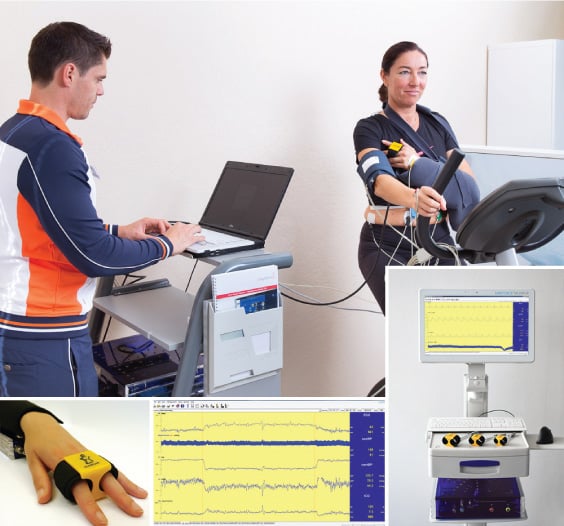HealthManagement, Volume 19 - Issue 4, 2019
How can we get the most common, costly, and modifiable cardiovascular risk factor under control?

Cardiovascular disease (CVD) is the number one cause of death with an upward trend beyond 30% and a tripling in costs between 2010 and 2030, placing a significant economic burden on public healthcare services.1,2,3 The most common risk factor for developing CVD is hypertension1 affecting one billion individuals worldwide.4 The challenge for specialists is that hypertension being the most “modifiable”1 risk factor, very often remains undetected and symptom-free at an early stage and is only treated when it has already become a long-term disease.
You might also like:State-of-the-art syncope assessment
So it is critical for cardiologists to understand the influencing factors in order to predict or detect early and prevent this widespread disease.
In a new study publication with the Task Force® Monitor (TFM) in the Journal Nature, Man et al. investigated the essential cardiovascular parameters of five large consanguineous families to find out if hypertension is heritable and if it depends on genetic and/or environmental factors. The study team described “moderate heritability for blood pressure”5 and found environmental factors more significant.
Other TFM studies described the positive impact of physical activity on the cardiovascular system.4,6,7 Considering that “physical inactivity is now the fourth leading cause of death worldwide,”8 the correlation seems obvious. Also the kind of exercise can influence efficacy as isometric exercise training has a higher positive impact on resting arterial pressure than traditional aerobic and resistance training.4 Physical training therefore not only supports the therapy for hypertension patients but also plays an important role as an efficient preventive measure.6
Risk prediction approaches and powerful monitoring tools help identify potential hypertension patients “for timely prevention and treatment at an early stage before obvious symptoms happen.”3
There is also evidence that long-term complications of undetected, untreated or ineffectively controlled hypertension can also lead to cerebrovascular diseases, an impairment of the cognitive function and even organ damage. Early detection and promptly initiated antihypertensive management can reverse these implications.9
We can conclude from these findings that we can contribute to a better cardiovascular health by making the “most common, costly, and preventable CVD risk factor”2 an avoidable one. This might finally lead to the efficient reduction of the terrifying number of hypertensive patients and the high cost for health organizations.
References:
1 Czuriga‐Kovács et al. (2019) Hypertension‐induced subclinical vascular and cognitive changes are reversible - An observational cohort study. The Journal of Clinical Hypertension, 21(5):658–667.
2 Fiuza-Luces C et al. (2018) Exercise benefits in cardiovascular disease: beyond attenuation of traditional risk factors. Nature Reviews Cardiology, 15(12): 731–743.
3 Lin WH et al. (2013) Investigation on Cardiovascular Risk Prediction Using Physiological Parameters. Computational and Mathematical Methods in Medicine.
4 Man T et al. (2019) Heritability and genetic and environmental correlations of heart rate variability and baroreceptor reflex sensitivity with ambulatory and beat-to-beat blood pressure. Nature Scientific Reports, 9(1):1–8.
5 O’Driscoll JM et al. (2017) Acute cardiac functional and mechanical responses to isometric exercise in prehypertensive males. Physiological Reports, 5(7).
6 O’Driscoll JM et al. (2018) Cardiac autonomic and left ventricular mechanics following high intensity interval training: A randomised cross-over controlled study. J Appl Physiol.
7 Pescatello LS et al. (2019) Physical Activity to Prevent and Treat Hypertension. A Systematic Review. Medicine & Science in Sports & Exercise, 51(6):1314–1323.
8 Taylor KA et al. (2019) Neurohumoral and ambulatory haemodynamic adaptations following isometric exercise training in unmedicated hypertensive patients. Journal of Hypertension, 37(4):827–836.
9 Taylor KA et al. (2017) Continuous Cardiac Autonomic and Haemodynamic Responses to Isometric Exercise. Med Sci Sport Exerc.



